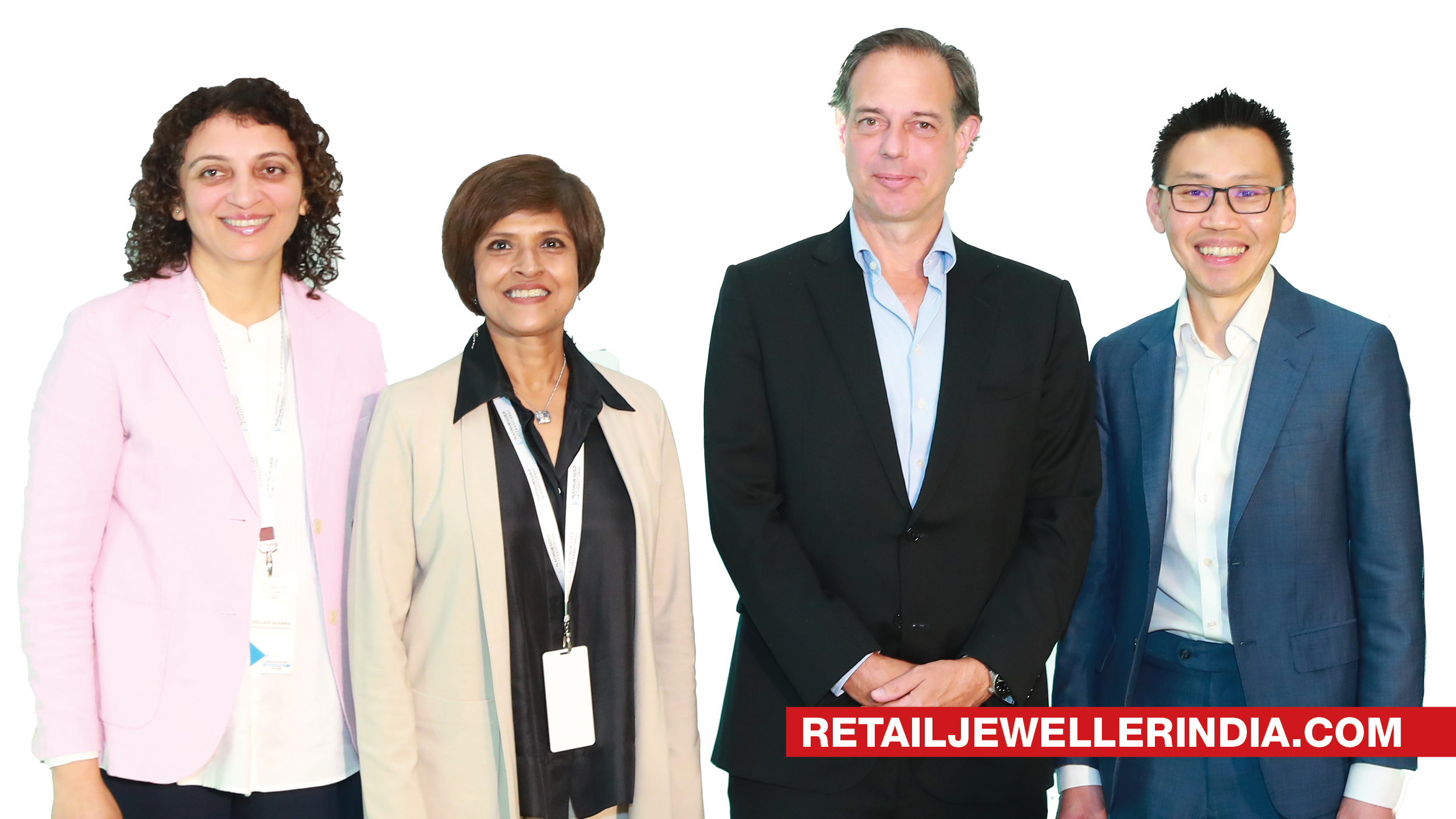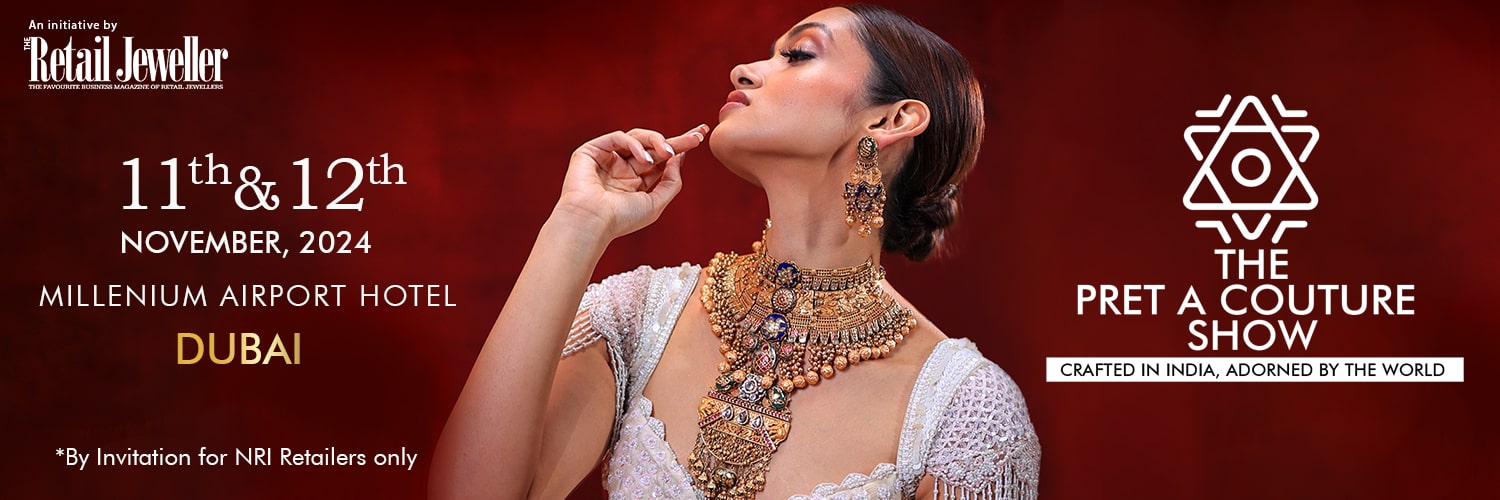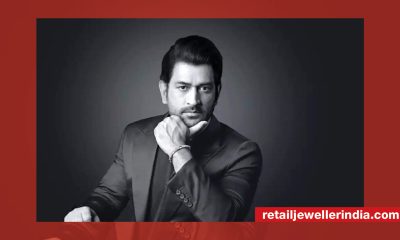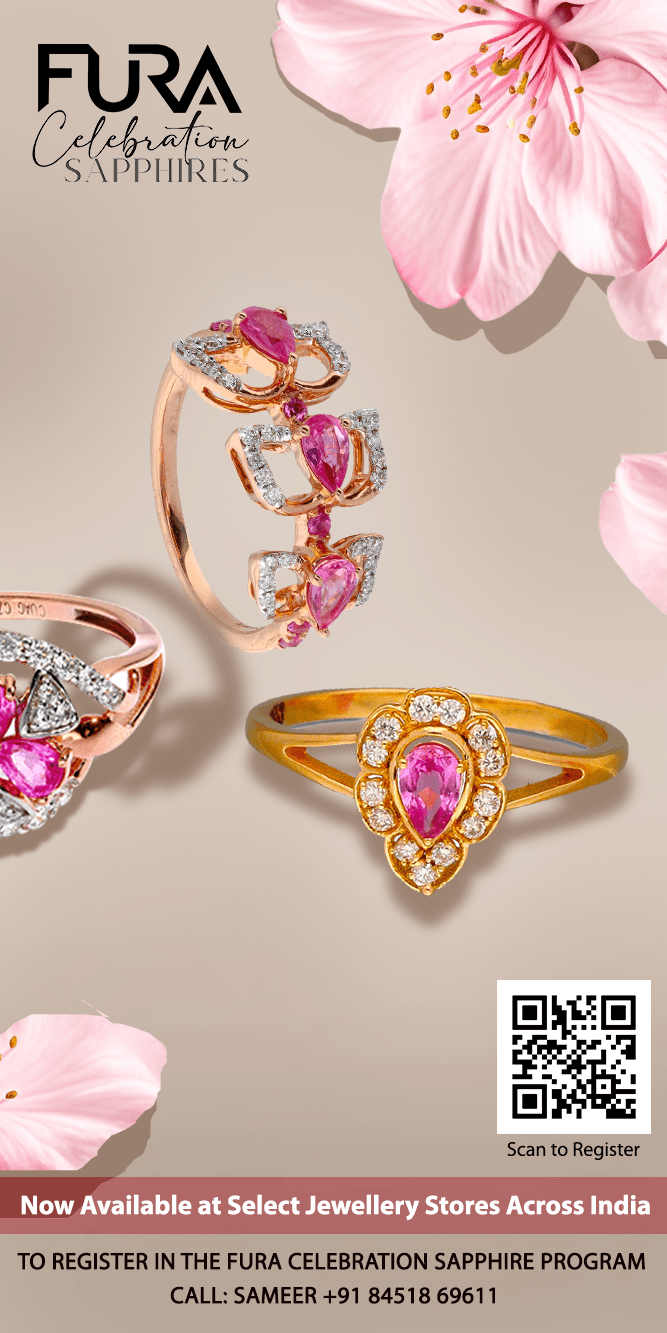Featured Articles
Key insights on the market for platinum in India

The top brass of Platinum Guild International talks about experimenting with the metal to create a new narrative for selling platinum to gold buyers, opportunities to upsell the category, and why the branded route to the market holds them in good stead for catering to the youth
The 6th edition of Platinum Guild International’s India Buyer Seller meet themed – ‘Be unstoppable’ has sparked many new ideas for growing the category on the back of compelling designs and marketing. Soma Bhatta spoke to Zairin Faizal-Khoo, Head of Market Development at Anglo American, Tim Schlick, COO, PGI and Vaishali Banerjee, Managing Director, PGI, India and Pallavi Sharma, Business Director, PGI on the sidelines of the show, about India taking the lead on platinum design innovation at scale, how the rare metal is well-poised for the youth to make every special moment a platinum moment, two new merchandise models for upselling and increasing stock turns multi-fold and the big-bang marketing plan for the season.
Edited Excerpts:
Soma Bhatta (SB): There is a lot of enthusiasm amongst manufacturers regarding bringing forth new innovative work to the annual buyer-seller meet. How was your experience at the show?
Tim (T): It is an astonishing event. I have been to India a few times before; I am amazed by India, but probably never as much as this year. There is an explosion of new designs. To say that I was positively surprised would be an understatement.
” People are researching while buying jewellery in the store. It drives the need for transparency and making a compelling offer at the point of purchase – that is perhaps the biggest disruptor. Brands that can cater to that particular need, I think they will win, and fortunately for us, our partners are up for that challenge. They are best suited to do that “
TIM Schlick, Coo, PGI

Zairin (Z): The enthusiasm of the partners was beyond my expectations. The designs manifest the meaning behind the designer’s vision, and the investment of emotion is clearly visible. Most interestingly, these designs are being produced at scale and are a big enabler in platinum’s wider reach into India and other international markets.

” The combination of design, marketing and branding is where PGI India is at its best. As the economy grows, disposal income rises, and consumer preference evolves, many opportunities exist to drive even greater appreciation of platinum jewellery “
Zairin faizal-khoo, Principal & Founding director, market development & ventures, Anglo american
SB: What are the latest innovations in the product?
Vaishali Banerjee (VB): We are experimenting with colour and metal combinations- platinum mixed with rose gold metal. It allows retailers to build a new narrative and upsell platinum to gold buyers.
” As far as India is concerned, the aspiration levels are the same across markets. It is about creating access and offering the platinum experience and products relevant to the market. Design is the biggest driver for sales at the counters. Platinum designs are based on creative interpretations of the latest design trends, consumer learning, and retailer feedback “
Vaishali banerjee, Country manager, pgi , India

Pallavi Sharma (P): We are also making many DIY pieces where the customers can change the colour of the inner band under the jacket of a laser-cut platinum ring. It allows us to create designs that are more versatile in terms of its usage.
We are introducing many options in platinum bands to differentiate between the couple’s rings even as men get more comfortable with diamonds set on platinum.
There is the use of Japanese Mokume Gane, an ancient Japanese technique to create exquisite designs.

” Design is the biggest driver for sales at the counters. The design range has been developed based on creative interpretations of the latest design trends, consumer learning, and retailer feedback “
Pallavi sharma, Business Director, PGI
We have a wide range of products with two-sided designs- earrings and bracelets that can be worn on either side. We have box sets starting as low as 15gm. We are also broadening the existing segments, for example, looking at wristwear beyond staid bangles and bracelets. It makes the range wider and adds an incremental opportunity for sales.
SB: Design differentiation is a big ask for customers. How is the brand fulfilling its promise?
P: Design is the biggest driver for sales at the counters. The design range has been developed based on creative interpretations of the latest design trends, consumer learning, and retailer feedback. We are using technology extensively; laser cutting, CNC and 3-D printing, all of which are being used to develop new possibilities in terms of edgy and lightweight designs. Though the look reveals the heft that buyers desire, they are easy to wear.
SB: Regarding manufacturing innovation, how do you rate India compared to the other markets and what, according to you, is driving this innovation?
T: India is an exceptional market where innovation is happening at scale. The consumer primarily drives it. It is a unique market in that it does not have a homogenous body of consumers that all want the same thing. A new generation of customers wants various things, which drives the adoption of innovation in manufacturing and diversity.
The industry is very savvy and skillfully responding to it. What is also remarkable is the adoption rate, the speed of adoption in India is intriguing. India is one of the fastest markets to adopt (to technology, trends, and consumer demand). That makes it very unique. The only other market that would be comparable would be China from a scale point of view.
SB: Technology is a big disruptor. How do you see it impacting jewellery retail sales?
T: Technology disruption is constant. What I find most interesting is that my generation researches before buying jewellery. Whereas, now, people are researching while buying jewellery in the store. It drives the need for transparency and making a compelling offer at the point of purchase – that is perhaps the biggest disruptor. Brands that can cater to that particular need, I think they will win, and fortunately for us, our partners are up for that challenge. They are best suited to do that.
SB: How do you see the future of retail in terms of giving more experiential buying to platinum customers?
T: This is being talked about a lot. It’s the omnichannel experience, but you must unpack this as a buzzword because it is very complex. It is more than having a consistent experience at every touchpoint; it is merging them, intertwining them, and just being able to cater to any need in consumers’ buying journey.

SB: Youth is the most important target segment for retailers at the moment. How is the youth changing and impacting platinum overall in the global space?
T: The world seems clear that Millennials and Gen Z are the most important and difficult segments. Three things that we see from a global perspective. Firstly, Gen Zs are into brands. Platinum makes an extreme case, with 80% of all platinum jewellery in India being within the branded segment. In no other market where we operate is there such a high percentage of branded jewellery in platinum. It holds us in good stead for dealing and engaging with Gen Z.
Secondly, for this generation, ‘eternal commitment’ is daunting; self-purchase is a big driver. Again, platinum is positioned as a rare metal to mark special moments (unrestricted by any forever commitments) – through self-purchase, gifting and personal milestones. In Japan, we started an entry-level brand Platinum Woman, and in China, we launched PT Moment. Both are targeted at self-purchase.

Lastly, this is the generation that rates sustainability highly. Luckily for platinum, the metal sets the benchmark in sustainability. We have robust ESG credentials. Eighty per cent non–jewellery usage benefits society by reducing emissions, and Anglo American, the sole sponsor for PGI India, is the highest private job creator in South Africa and supporting local communities.
SB: The youth is moving away from material experiences. Do you see that working to the advantage of the category?
T: What is important in all of this is that you see the entry of international fashion brands into jewellery. Louis Vuitton, Chanel, and many others are making headways into jewellery globally, which shows that jewellery is an exciting sector.
As far as platinum positioning for the youth is concerned, it is a rare metal for rare moments. The youth want to capture special moments – and making it a platinum moment makes it enduring and experiential.
It doesn’t have to be a relationship milestone; it could be anything – a personal experience you want to capture with a piece of jewellery. It is a constant reminder of that moment. I think that particular trend is working in favour of a niche metal such as platinum,
SB: PGI has introduced two new merchandise models for retailers to achieve higher sales. How do they work?
VB: We have introduced the best seller model for retailers to gain from increased stock turns. It is backed by a merchandise mix of best-sellers with an auto-replenishment system to avoid stock–out.
And there is an Upsell model that creates differentiation by adding platinum two-tone metal designs in the gold section. There are bracelets, rings, and pendant sets in mixed metals of gold and platinum. We have a vast range of innovative designs in both segments.
SB: PGI strategies are based on extensive market research. What do the new insights reveal?
VB: Our strategies are led by keeping the consumer front and centre. Over the last two years, we have met over 20,000 consumers in India. Our aim is always to unearth unmet needs. Platinum occupies a high share of mind with 86 per cent awareness. And out of those, 82 per cent are considering platinum for their next purchase, and 55 per cent claimed it will be their first choice when they next go to the market.
SB: How do you view the future potential of platinum in India?
Z: We in Anglo-American view jewellery as a significant area of demand development for platinum. Globally, it is around a quarter of the overall platinum consumption. In India, we have been working since 2016 to develop appreciation and awareness of platinum. As the economy grows, disposal income rises, and consumer preference evolves, many opportunities exist to drive even greater appreciation of platinum jewellery. There may be opportunities to grow beyond India. This is particularly when we look at India’s design prowess of manufacturers, conducive policies and enhanced relations between key jewellery markets of the world. I think this tremendous growth is only starting. India is now looking ahead to some very, very exciting years, if not decades.

The combination of design, marketing and branding is where PGI India is at its best. Regarding our objective of tapping into wider aspects of platinum beyond industrial usage, PGI has offered vital support in the jewellery segment. The stellar and continued commitment of our partners and the PGI India team is commendable.
VB: Anglo-American, the key stakeholder and sole sponsor for PGI India, has a long-term vision and commitment to this market, enabling us to grow it. In the top 20 markets within the core target group of Platinum jewellery in India, we contribute 15 per cent of all jewellery pieces bought, which is no mean feat considering it is a niche metal. In fact, this has led to a robust growth of 26% in retail sales from our strategic partners in 2022.
SB: Is Platinum jewellery still an urban phenomenon or has it gone beyond metros?
VB: As far as India is concerned, the aspiration levels are the same across markets. It is about creating access and offering the platinum experience and products relevant to the market. Our campaign is in 9 languages factoring in the diversity in different needs. The platinum season of Love is now in tier markets, and the response is phenomenal.
The Retail Jeweller India Magazine





 Wide Angle1 month ago
Wide Angle1 month agoIndia has overtaken China to become second largest diamond market: De Beers CEO Al Cook

 Daily News1 month ago
Daily News1 month agoUS-based private equity firm Advent International to acquire Orra Fine Jewellery, say media reports

 Wide Angle1 month ago
Wide Angle1 month agoEminent jeweller Viren Bhagat sets up first global boutique in London’s Mayfair

 Daily News1 month ago
Daily News1 month agoLimelight Lab Grown Diamonds secures $ 11 million in funding to fuel its retail growth























